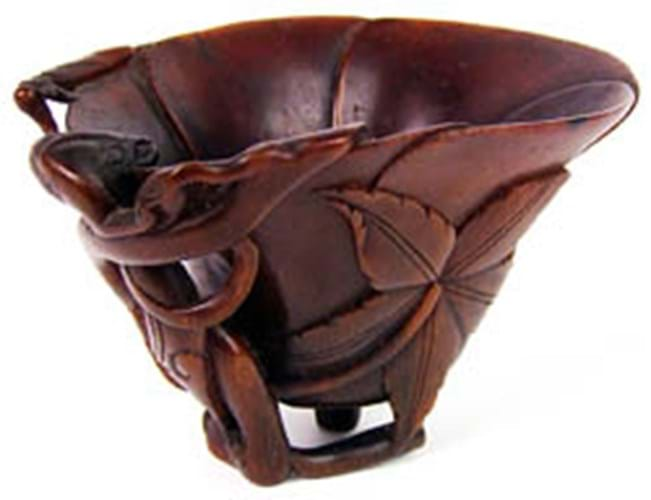
Academic and consultant Anthony du Boulay says that the large majority are genuine antiques and do not contravene international laws on the sale of endangered species.
His letter in this week's printed edited of ATG responds to long-running claims that most of these highly-prized vessels are recently made from illegally-sourced horn.
While Mr du Boulay agrees there is a connection between the very high prices paid for libation cups and the Chinese belief that the horn has special properties, he says recent correspondents are mistaken in thinking that most are made recently from poached horn.
It is, partly, he says, a case of economics: "Even at the enhanced price paid for raw rhino horn, the cost of these small cups is greatly in excess of anything they could raise by being ground up. This simply would not be economically viable, and the modern carvers, though often skilled, do not normally have the ability to deceive the specialist."
Their recent frequency on the market reflects the fashion for these vessels in 17th and 18th century China and the numbers subsequently acquired by European collectors from the end of the 18th century onwards.
"In my long experience in this world I can remember these sitting at the back of cabinets in many old country houses but not being highly considered," writes Mr du Boulay. "The present fashion has brought them out [but] they are usually perfectly genuine.
Karen Rennie, the Folkestone-based specialist in 20th century British art and design, has written to ATG on this issue on a number of occasions. Her letter, published last week, claimed that UK provincial auctions were being used as "the de-facto clearing house" for the illegal trade in rhino horn.
"The frequency with which these cups appear suggests most are recently made from poached horn. The antique status conferred by a sale at auction effectively legitimises these objects [that are] subsequently ground down to be used as homeopathic remedies."
Jonathan Cook, another regular correspondent on the subject, sent a similar letter, arguing that "a steep rise in prices for second hand rhino horn is bound to have a knock-on effect on the survival of [and] endangered species".
Both he and Karen Rennie have taken the antiques industry to task on this issue, and have argued for stronger regulation.
Under current guidelines, most antiques that include the "parts and derivatives" of endangered species enjoy an exemption from CITES controls known as the "worked item" derogation. This states that an item shall be exempt from the normal sales controls if it was acquired prior to June 1947 and has been significantly altered from its natural raw state for jewellery, adornment, art, utility or musical instrument. It is illegal to sell any rhino horn 'worked' after the 1947 deadline or 'unworked' rhino horn of any age.
Difficulties arise when an item is sold without provenance because there is no scientifically accepted method of determining the age of the raw material.
By Roland Arkell




